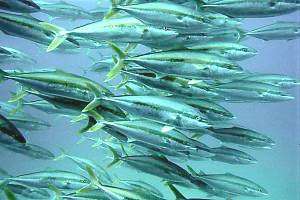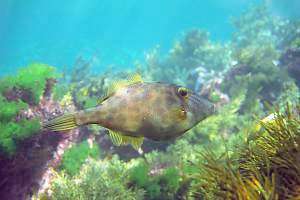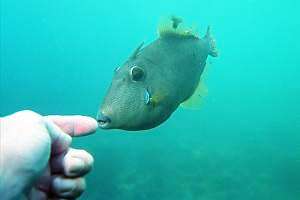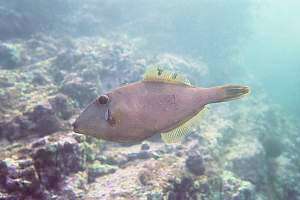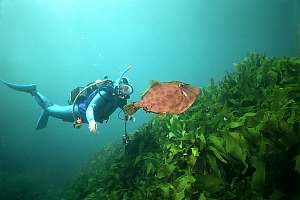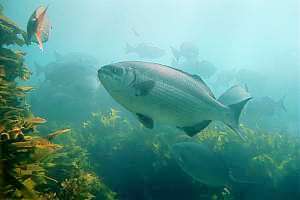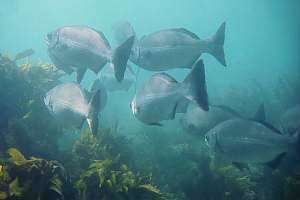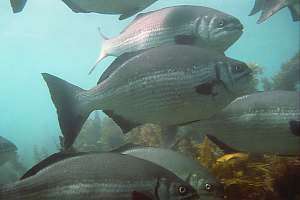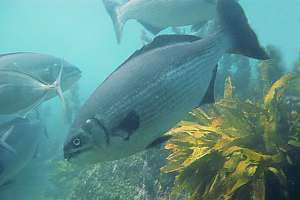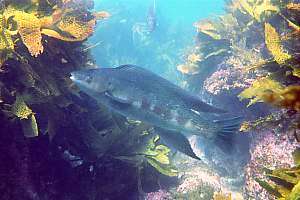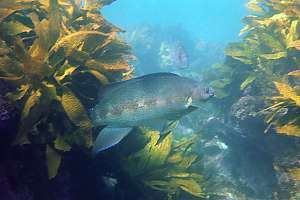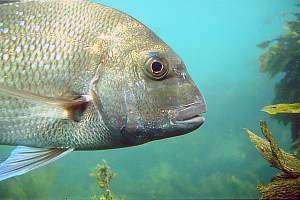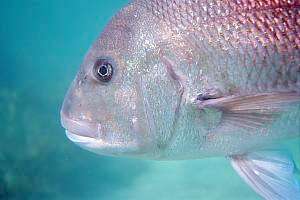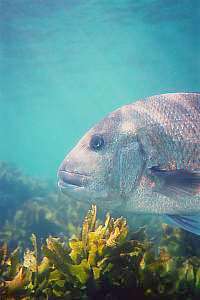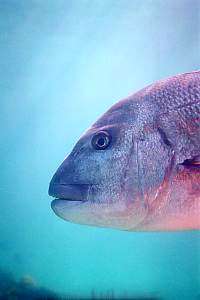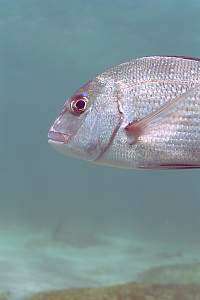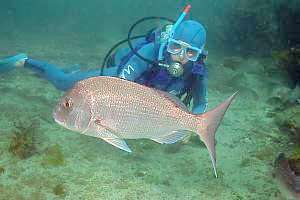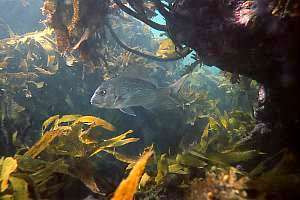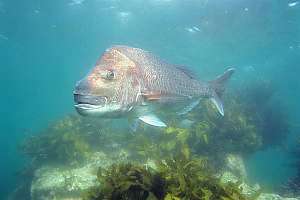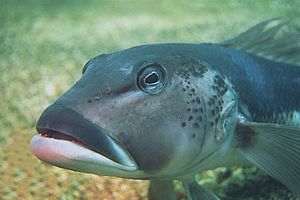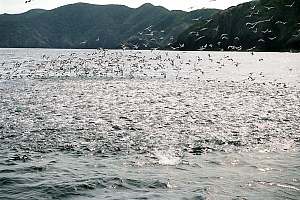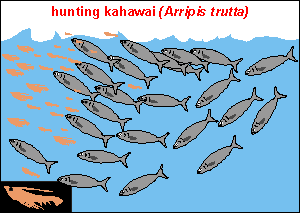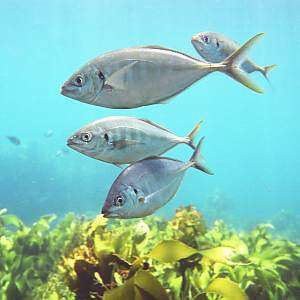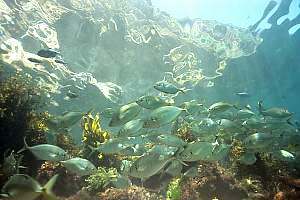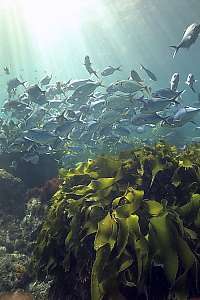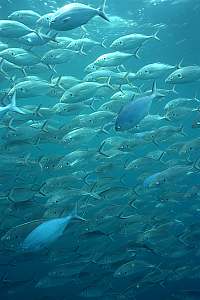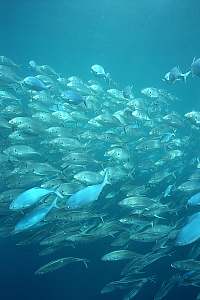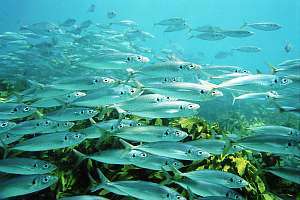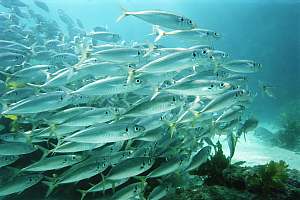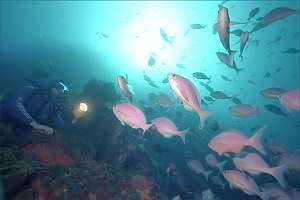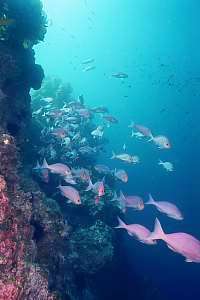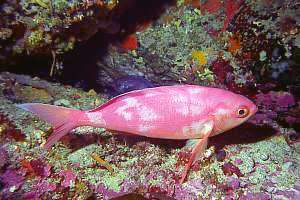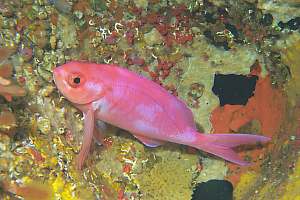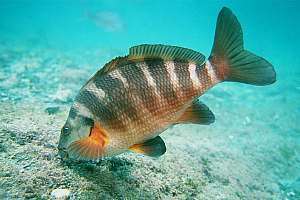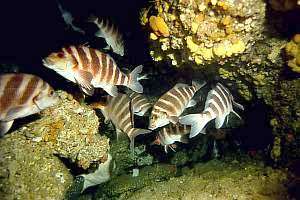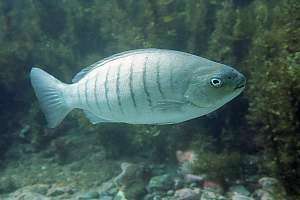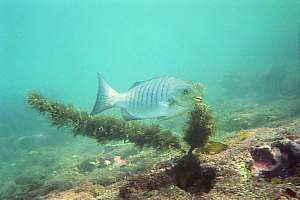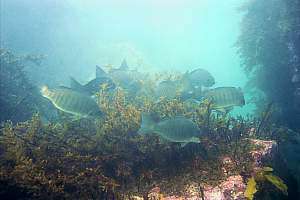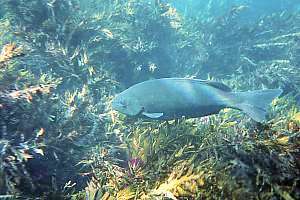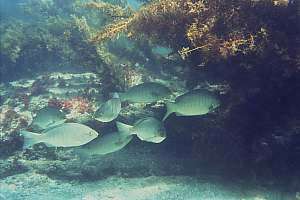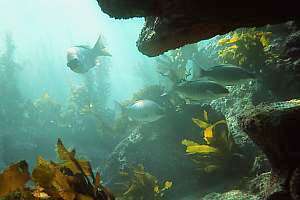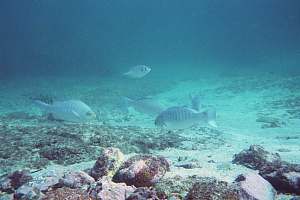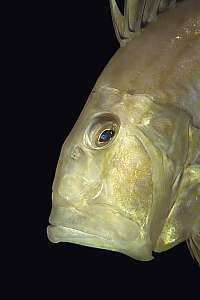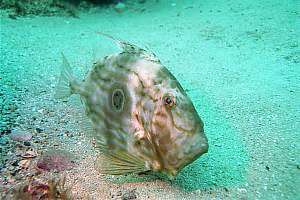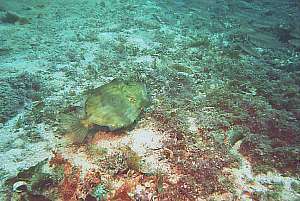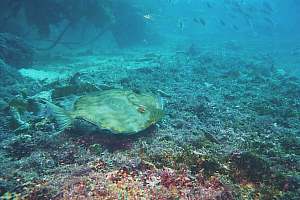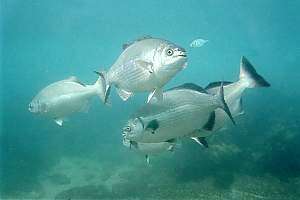 f007727: in a rare occasion of trust, these large silver
drummer carry on with their duties as they are being observed from close
up. The reason for their assembly is the little trevally cleanerfish, fisible
at the top, facing the nose-up drummer who has turned silver for the occasion.
The others wait patiently for their turn, face-down with their fins coloured
black, similar to their pyjamas at night, as if they are saying 'I am not
taking part'.
f007727: in a rare occasion of trust, these large silver
drummer carry on with their duties as they are being observed from close
up. The reason for their assembly is the little trevally cleanerfish, fisible
at the top, facing the nose-up drummer who has turned silver for the occasion.
The others wait patiently for their turn, face-down with their fins coloured
black, similar to their pyjamas at night, as if they are saying 'I am not
taking part'. |
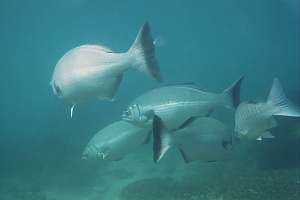 f007729: once the cleanerfish has arrived at its client's
tail, it becomes the next client's turn. The waiting fish signal each other
with colour changes in their skins and tails, and with their postures.
These fish have lived together as one group for perhaps twenty years, and
they know one another very well. (Keyphosus sydneyanus)
f007729: once the cleanerfish has arrived at its client's
tail, it becomes the next client's turn. The waiting fish signal each other
with colour changes in their skins and tails, and with their postures.
These fish have lived together as one group for perhaps twenty years, and
they know one another very well. (Keyphosus sydneyanus) |
